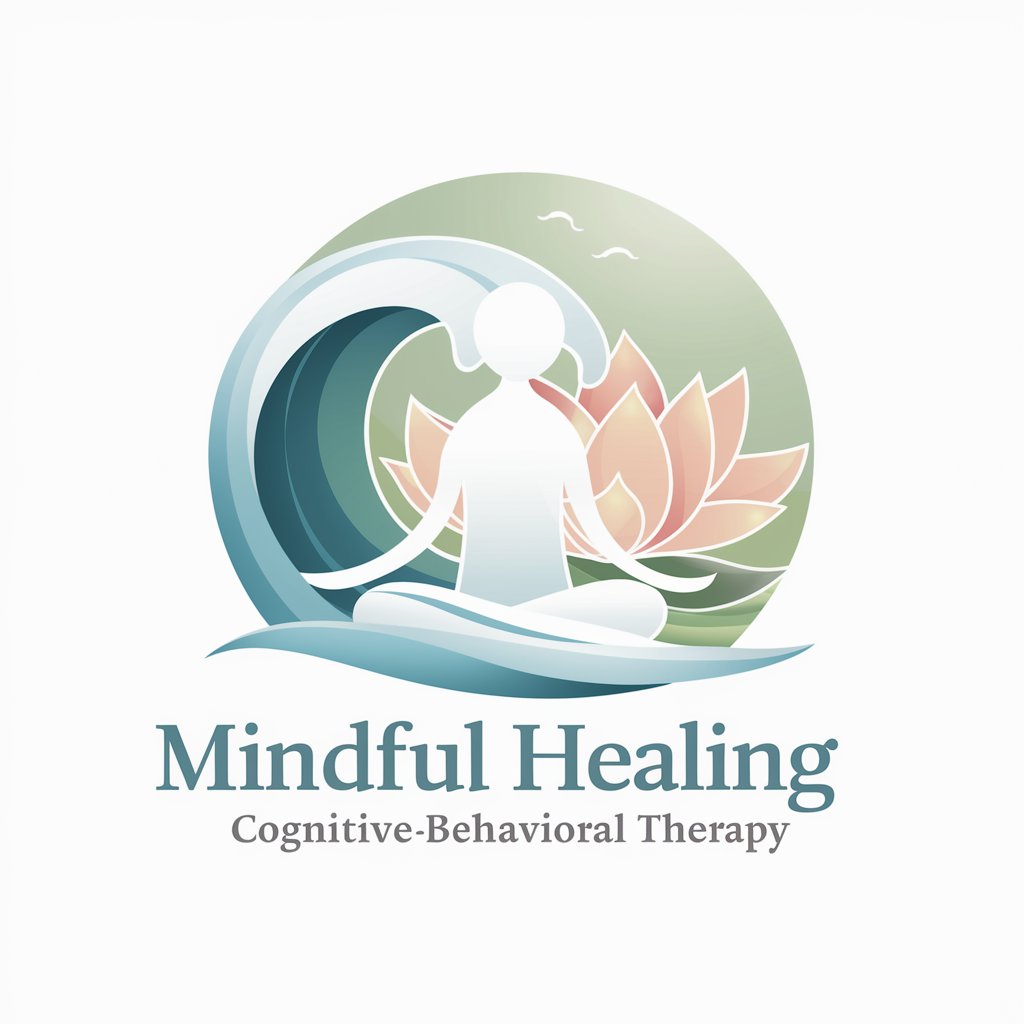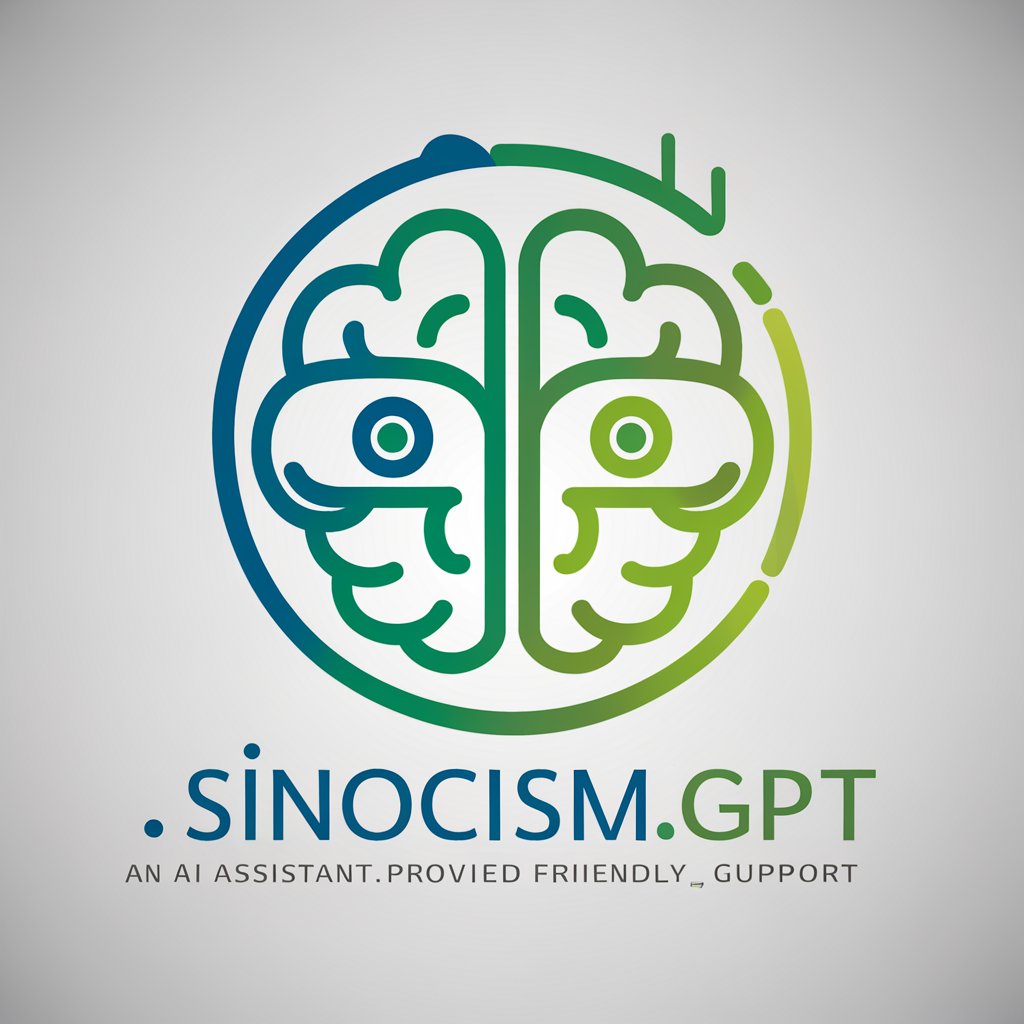Mindful Healing - Cognitive-Behavioral Tools

Welcome to Mindful Healing, your path to wellness.
Empower your mental health journey with AI-powered mindfulness and therapy tools.
Describe a technique from cognitive-behavioral therapy that helps manage anxiety.
What are some mindfulness exercises to reduce stress?
How can motivational interviewing enhance patient adherence to treatment?
List and explain various coping skills that can be used in daily life.
Get Embed Code
Introduction to Mindful Healing
Mindful Healing is a specialized tool designed to promote healthy coping strategies by integrating elements of cognitive-behavioral therapy, mindfulness practices, and motivational interviewing. It aids individuals in managing stress, emotional difficulties, and behavioral challenges through a blend of therapeutic techniques. For example, a person struggling with anxiety might use Mindful Healing to learn mindfulness exercises that help regulate emotional responses and cognitive techniques to challenge irrational fears. Powered by ChatGPT-4o。

Main Functions of Mindful Healing
Cognitive-Behavioral Therapy (CBT)
Example
Mindful Healing uses CBT to help individuals identify and challenge distorted thinking patterns and replace them with more realistic and positive thoughts. For instance, a user might be guided through the process of recognizing automatic negative thoughts associated with social interactions and systematically testing and modifying these beliefs.
Scenario
A user feels inadequate at work and frequently criticizes themselves. Mindful Healing guides them through identifying these automatic negative thoughts, challenging their validity, and crafting more supportive self-statements.
Mindfulness Practices
Example
This function includes guided meditations, body scans, and mindfulness exercises that encourage present-moment awareness and relaxation. These practices help users manage stress and increase their emotional resilience.
Scenario
During a stressful period, a user engages with a guided body scan exercise provided by Mindful Healing to alleviate tension and enhance bodily awareness, helping them relax and refocus their attention away from stress.
Motivational Interviewing
Example
Mindful Healing incorporates motivational interviewing techniques to enhance motivation and commit to specific changes. This approach helps users explore and resolve ambivalence about behavioral changes by eliciting and reinforcing their own motivations and committed actions.
Scenario
A user unsure about quitting smoking engages with Mindful Healing, which uses motivational interviewing to help them articulate their reasons for wanting to quit and plan practical steps towards achieving this goal.
Ideal Users of Mindful Healing
Individuals with Mild to Moderate Mental Health Issues
People experiencing anxiety, stress, depression, or other emotional challenges would benefit from Mindful Healing’s structured therapeutic approaches to managing symptoms and improving mental health.
People Seeking Personal Development
Individuals interested in personal growth, such as enhancing emotional intelligence, resilience, and mindfulness, can use Mindful Healing to gain skills that support these goals.
Healthcare Professionals
Therapists, counselors, and other healthcare providers may use Mindful Healing as a supplementary tool to support their clients in between sessions, helping them practice skills and techniques discussed during therapy.

How to Use Mindful Healing
Start Your Journey
Begin by visiting yeschat.ai to sign up for a complimentary trial, allowing you to explore the features of Mindful Healing without the need for a subscription or ChatGPT Plus.
Identify Your Needs
Reflect on your current mental and emotional state. Are you seeking ways to manage stress, anxiety, depression, or perhaps looking for support in overcoming a specific challenge? Understanding your needs will help you navigate Mindful Healing more effectively.
Engage with the Content
Dive into the diverse resources available, including mindfulness exercises, cognitive-behavioral therapy tools, and motivational interviewing techniques. Regularly practicing these exercises can significantly enhance your mental wellbeing.
Apply Learned Techniques
Incorporate the strategies you learn into your daily life. Whether it's starting your day with a mindfulness exercise, utilizing CBT methods to challenge negative thoughts, or using motivational interviewing to reinforce positive behaviors, consistent practice is key.
Track Your Progress
Make use of tracking tools within Mindful Healing to monitor your emotional and mental health progress over time. Reflecting on your journey can motivate continued growth and adaptation of strategies to fit your evolving needs.
Try other advanced and practical GPTs
Business Email Virtual Assistant by Nerdie Girl
AI-powered email management at your fingertips.

Guide HypnoFit
Transform Your Mind, Transform Your Body

El Monologista de Mensajes recividos.
Chatting with AI, just like texting a friend.

Pino D'AnGPT
Reviving Italian Classics with AI

Tutor Fundamentos Matemática
Mastering mathematical proofs, one concept at a time.

Exam
AI-powered exam preparation and analysis

Walter the Writer: Dialogue Tool
Elevate Your Script with AI-Powered Dialogue

SinocismGPT
Empowering insights with AI-driven clarity.

Redshift SQL Wizard
AI-powered insights for Redshift SQL

Patch Pal
Empowering Your Embroidery with AI

Custom Embroidered Patch Designer
Design Patches Easily with AI

The Embroidery
Crafting Your Ideas into Embroidered Reality

Frequently Asked Questions about Mindful Healing
Is Mindful Healing suitable for everyone?
Mindful Healing is designed to be accessible and beneficial for a wide range of individuals. Whether you're dealing with daily stressors, seeking to improve your mental wellbeing, or coping with more significant challenges, the tools and techniques provided can offer valuable support. However, it's important to recognize that Mindful Healing is not a substitute for professional medical advice or therapy for those with severe mental health conditions.
How often should I practice the exercises provided?
The effectiveness of Mindful Healing's exercises increases with regular practice. It's recommended to engage with the mindfulness and cognitive-behavioral therapy exercises daily if possible. Consistency is key to cultivating a healthier mental and emotional state.
Can I use Mindful Healing alongside other treatments?
Absolutely. Mindful Healing is designed to complement other forms of therapy and treatment. It can enhance the benefits of traditional therapy, medication, or any other treatment you may be receiving. Always discuss with your healthcare provider to ensure the best comprehensive care approach.
How does Mindful Healing differ from traditional therapy?
Mindful Healing offers self-guided tools and resources inspired by evidence-based practices such as cognitive-behavioral therapy and mindfulness. Unlike traditional one-on-one therapy, it provides the flexibility to work through content at your own pace and in the comfort of your own space. However, it does not replace the personalized guidance a licensed therapist can provide.
What if I'm not experiencing any changes?
Mental and emotional growth often takes time and patience. If you're not noticing immediate changes, don't be discouraged. It's important to continue practicing and perhaps focus on different techniques that might be more effective for your unique situation. Additionally, seeking support from a mental health professional can provide further personalized guidance.
